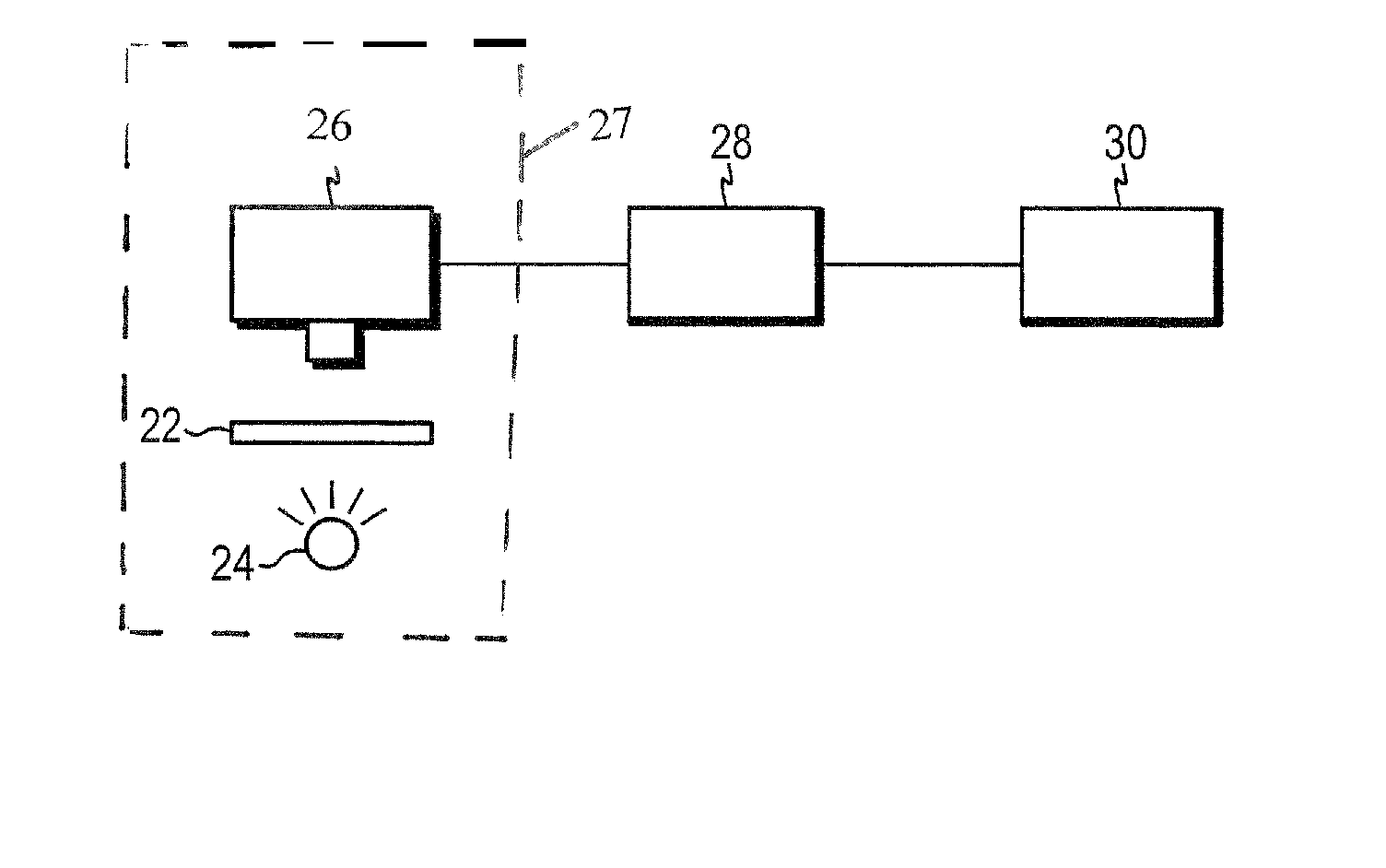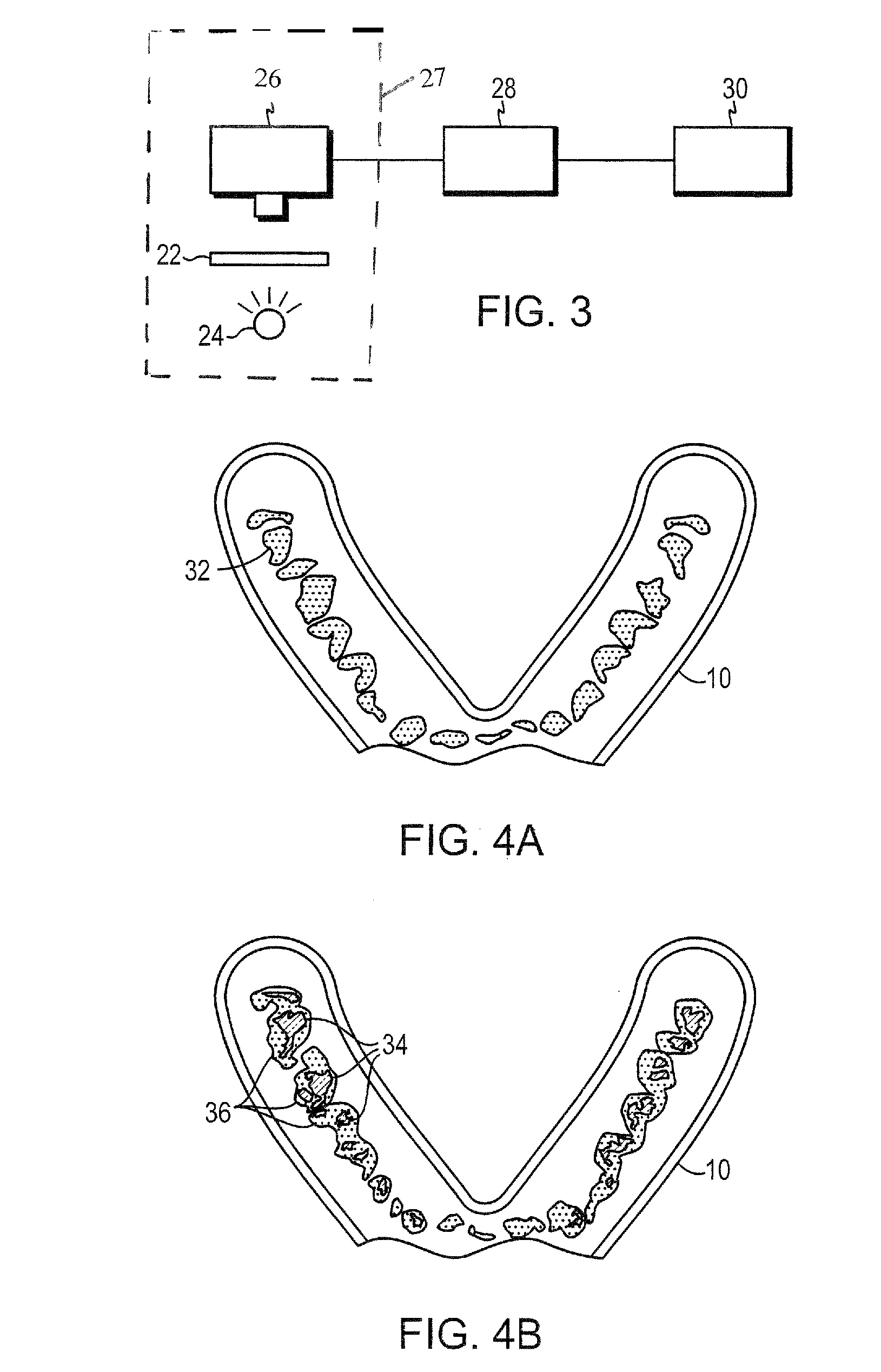Method for occlusal position measurement and recording
a technology of occlusal position and measurement method, which is applied in the field of rapid and accurate measurement and recording of the occlusal position, and achieves the effect of superior impression material and high accuracy
- Summary
- Abstract
- Description
- Claims
- Application Information
AI Technical Summary
Benefits of technology
Problems solved by technology
Method used
Image
Examples
Embodiment Construction
[0015]In FIG. 1, a frame 10 shaped to record the bite of a patient has a central area containing a blanket 12 of a single-component, linear, non-cross linking polysiloxane having a molecular weight on the order of from 100,000 to 500,000 daltons in accordance with the present invention. The frame is formed of two arms, 10A and 10B, which are overlapped at a pivot 11 to enable the arms to rotate toward and away from each other so as to accommodate the bite of a variety of patients. Pins 13 provide stops spreading the arms to different set positions.
[0016]By “single-component, linear, non-cross linking polysiloxane” we mean a linear polysiloxane that can receive an impression, and retain it for a suitable period of time, without the addition of other components that promote cross-linking. By “a suitable period of time”, we mean a time of at least a few minutes.
[0017]The blanket is relatively thin (preferably on the order of from 1 / 16th inch to no more than ¼ inch), and generally non-s...
PUM
 Login to View More
Login to View More Abstract
Description
Claims
Application Information
 Login to View More
Login to View More - R&D
- Intellectual Property
- Life Sciences
- Materials
- Tech Scout
- Unparalleled Data Quality
- Higher Quality Content
- 60% Fewer Hallucinations
Browse by: Latest US Patents, China's latest patents, Technical Efficacy Thesaurus, Application Domain, Technology Topic, Popular Technical Reports.
© 2025 PatSnap. All rights reserved.Legal|Privacy policy|Modern Slavery Act Transparency Statement|Sitemap|About US| Contact US: help@patsnap.com



